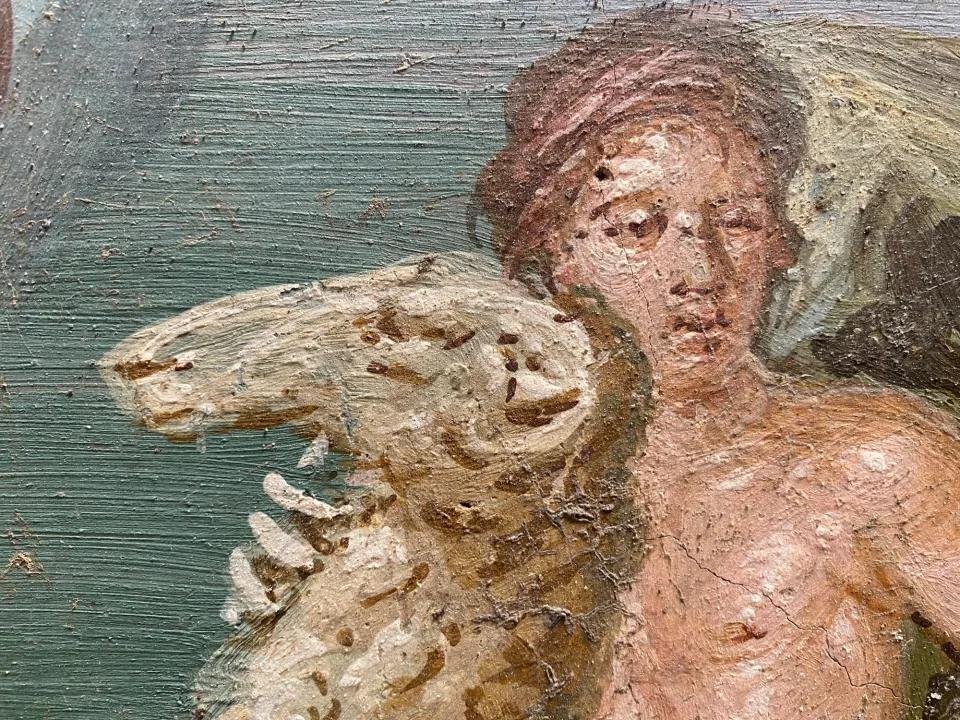Archaeologists working at the ancient Roman city of Pompeii have unearthed a fresco depicting the Greek mythological siblings Phrixus and Helle.
 The fresco depicting Phrixus and Helle, the Greek mythological siblings. Courtesy of the Archaeological Park of Pompeii
The fresco depicting Phrixus and Helle, the Greek mythological siblings. Courtesy of the Archaeological Park of Pompeii
This vivid portrayal, still vibrant after more than 2,000 years, was found during restoration work around the mansion of the House of Leda. Gabriel Zuchtriegel, the director of Pompeii Archaeological Park, hailed the find as a poignant reflection of history, noting, “History has repeated itself.”
The fresco portrays Phrixus and Helle as they flee their stepmother Ino on the back of a magical ram with the Golden Fleece. Phrixus is shown riding the ram while Helle falls into the water, symbolizing the tragic outcome of their escape.
Zuchtriegel describes Phrixus and Helle as “two refugees at sea, a brother and sister, forced to flee because their stepmother wants rid of them and she does so with deception and corruption.” He highlighted the parallel between their story and contemporary issues, underscoring how the themes resonate across time and cultures.
 In the fresco, Helle is depicted on the verge of drowning. Courtesy of the Archaeological Park of Pompeii
In the fresco, Helle is depicted on the verge of drowning. Courtesy of the Archaeological Park of Pompeii
The fresco was painted as if it were a framed picture, hanging on a yellow wall, adding to its visual impact. Alongside this mythological scene, other frescoes depicting still life images and portraits of women have also been uncovered.
Excavations at the House of Leda, where the fresco was found, have been ongoing since the 18th century but were relaunched in 2018 with the aim of reconstructing a complete plan of the site. These efforts will not only preserve these historical treasures but also make them accessible to the public.
The city, famously destroyed by the eruption of Mount Vesuvius in CE 79, has become one of the world’s most visited archaeological sites, attracting nearly four million visitors annually. In 2013, UNESCO threatened to include Pompeii on its list of world heritage sites in peril, prompting Italian authorities to enhance preservation efforts.
Recent months have seen other notable discoveries in Pompeii, including thirteen Nativity-style statuettes, and a striking still-life fresco reminiscent of a pizza, complete with what appears to be a pineapple.





